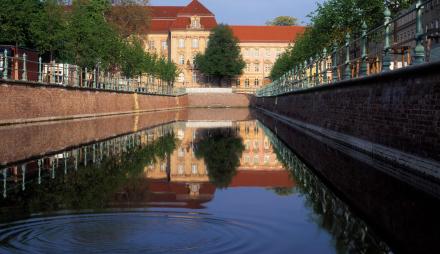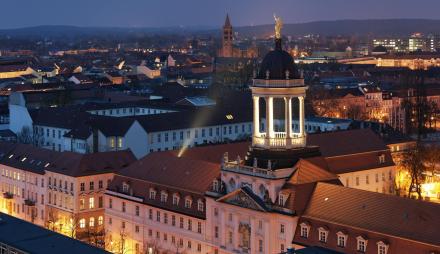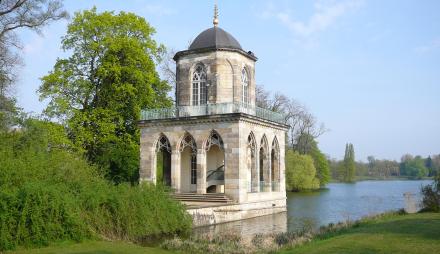
Sanssouci Palace (© TMB Ulf Boettcher)
Sanssouci Palace – "sans souci - without worry" – is located in the eastern part of Sanssouci Park and is one of the most famous Hohenzollern palaces in the Brandenburg state capital of Potsdam. It was the favourite retreat of Frederick the Great. The palace served as his summer residence and pleasure retreat in Potsdam, where he primarily wanted to enjoy his private life. Here, he preferred to withdraw with his dogs.
The palace was built between 1745 and 1747 by Georg Wenzeslaus von Knobelsdorff, based on the ideas and sketches of the king, on a terraced vineyard. It is considered a masterpiece of German Rococo architecture. The rooms, characterized by splendor and elegance, are preserved in their original state and are adorned with masterpieces by Watteau, Panini, and Pesne. They also reflect the king's love for the magnificent surroundings, the so-called "Prussian Arcadia."
The ensemble of Sanssouci Palace in Potsdam also includes the splendid Bildergalerie (Picture Gallery) and the Neue Kammern (New Chambers Palace).
Notably, the king wished to be buried on the upper vineyard terrace in a crypt. Even in death, he wanted to remain close to his Sanssouci. His wish was fulfilled, albeit only in 1991. Frederick the Great's grave is located on the upper terrace.
Links
Address
Schloss Sanssouci
Weinbergterassen
14469 Potsdam
Germany



